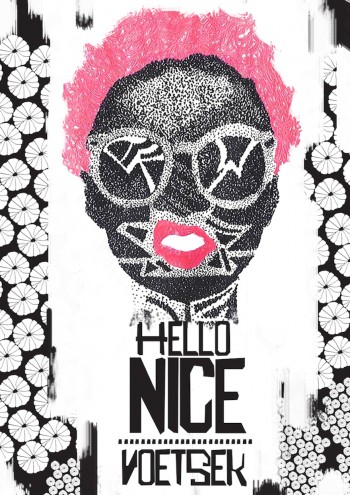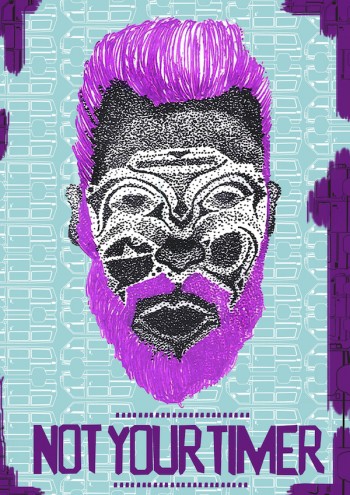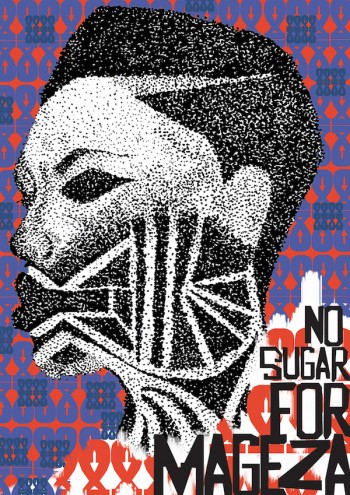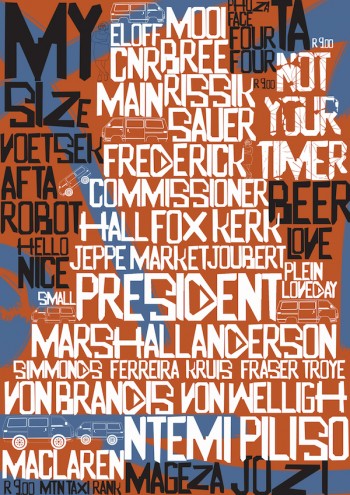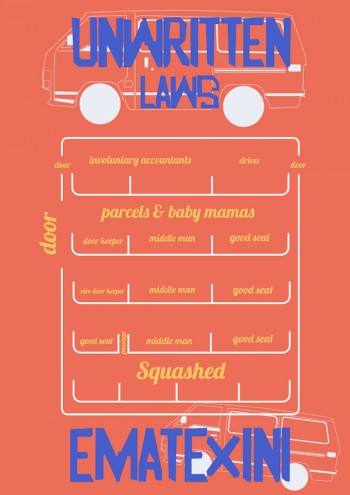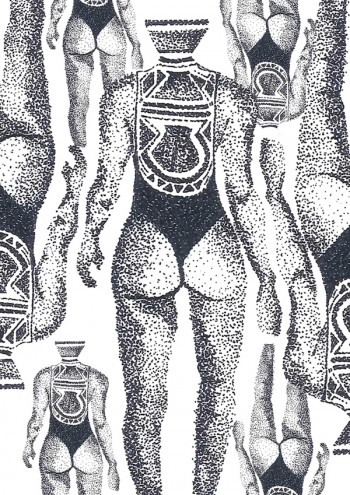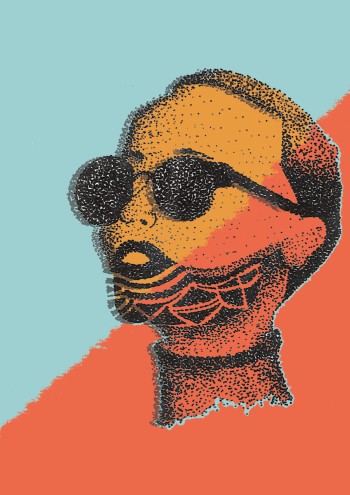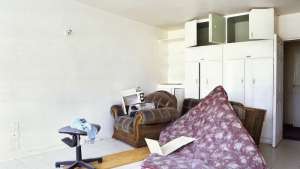From the Series
Born and raised in the south of Johannesburg, graphic designer Rendani “Missblacdropp” Nemakhavhani took her first trip into the inner city in 2008. Before then she’d heard all the warnings: “Johannesburg is not a safe place”, “The safest place to keep your money is in your bra” and “It’s the kind of place you will not survive”.
Inspired by its people and culture, Nemakhavhani kept revisiting downtown Joburg. Using humour and a raw graphic style, Nemakhavhani’s illustrations attempts to dispel myths about the city and provide a platform to engage with questions about Jo’burg.
“Johannesburg is not a place one should try to embellish,” she says. “The city has as much good as it does bad; and that’s a thing we should accept about the city. I refer to it as a hideous beauty.”
Nemakhavhani publishes a blog, JoburgMyHomeburg, where she exhibits her graphic prints inspired by walking through the city. She is also the curator of the group exhibition 30 Days and a City. Here, fresh from her participation in Design Indaba Expo 2015’s Emerging Creative programme, she tells us about her love for her home city, where the nickname “Missblacdropp” comes from and her plans for the future.
How did you get into graphic design?
I've always been a creative head. I don't draw very well, so I thought it would be easier for me to do something that has to do with computers. I didn't understand what graphic design was when I first got into it. I wish I had had better guidance on what to expect because I was avoiding studying something that required me to do free-hand drawing. Oh, how little I knew. I'm glad with myself for going through the entire course though.
Tell us about the techniques you use in your work?
I enjoy creating everything from scratch. I hand draw most of my graphics using a style called pointillism (and through this style I survived drawing). I do so until I'm happy with it. I then scan it in and apply colour and text using Photoshop and Illustrator interchangeably. I also like to create my own fonts, when I have the time for it. I really enjoy using bold colours. I always try to go for a hand made/crafted feel. I don’t know why. I just do.
How would you describe your aesthetic?
Most people who've seen the work go for the term "African". Which is something that makes me feel as though I'm being put in a box and can't be diverse. That really irks me. Yes, I'm African-inspired, but there must be more to it than that – pointillism doesn't come from Africa. I don't describe my work as anything really. I prefer not to subscribe to any titles. I don't know what my style of work will look like a year or even five years from now. I will say this though: most people who can relate to my aesthetic are black people.
Tell us about JoburgMyHomeburg.
JoburgMyHomeburg has been my baby since 2012 when it was just my iPod, backpack and I. At the time I was using taxis quite frequently. I've always been fascinated with the grid structure of the city and it's mighty tall buildings. I would take photographs of the buildings that I was walking past or driving by (while in a taxi a.k.a. being “chauffeur”-driven to my next destination). I started it as a hashtag on Twitter (which didn't blow up or anything). A few friends then told me that they enjoyed the photos I had been taking. And so I continued with this idea of JoburgMyHomeburg.
Tell us about 30 Days and a City, and the artists you’ve had exhibiting?
30 Days and a City is a collaborative exhibition that I curated early last year. It was first made up of myself and five other creatives who live and work in the city. I had briefed everyone as follows: Over a period of five days (which would amount to 30 days when all six of us are combined) document how you experience the city in the medium that suits you best. I worked with photographers Andile Buka and Jeffrey Rikhotso, singer Nozuko Mapoma, journalist Lerato Mbangenio and multidisciplinary artist Sindiso Nyoni. I then put the work up on my blog and the response was amazing.
Lidudu'malingani wrote about the project in This is Africa. Mpho Matsipa, who was a facilitator at Studio X in Johannesburg at the time, read the article and wanted to meet me and see how we could take this further. We spoke about exhibiting in Studio X and then launched a second series, which was a black and white series. I then invited four more creatives – multimedia designer and 2014 Emerging Creative Kevin Makonga, illustrator and 2012 Emerging Creative Sharp-Lee Mthimkulu, graphic designer/illustrator Dali Gaga and photographer Hazel Mpande – to be a part of this collaboration.
For everyone who doesn’t know, tell us the meaning of the phrases “Hello Nice”, “No Sugar for Mageza” and “Not your timer”, which feature in some of your work?
"Hello Nice" is a form of cat-calling on Joburg streets. "No sugar for Mageza" means (loosely translated) “No pretty woman for a taxi driver”. Mageza is a derogatory term for taxi driver, which comes from the full expression “Umagez'empompini” (a person who baths under a tap). And "Not your timer" basically just means,“I’m not your father”.
Tell us about your nickname, “Missblacdropp”?
I gave myself this alias while I was in high school. The main reason was to embrace my blackness. My dark skin that wasn't socially acceptable. I figured that there was no way that I was going to be lighter than what I am. It's really never going to happen. So instead of shunning myself I should embrace everything that I am. It's the only way that one can really survive these things. It was just “Blacdropp” then, I then added the “Miss” as I got older and made it all one word.
What’s in the future? Any new projects in the pipeline?
Since I got back from Design Indaba, I feel like I need a personal assistant so I can keep up with my life (laughs). I really want 30 Days and a City to turn into a global project, first going around the African continent and working in cities. Tell[ing] those stories. I'm looking at going into taking my prints onto more functional platforms like clothing and especially furniture. Who knows where the universe will have me be. I'd also really like to be able to work in an advertising agency to add a different spice to the mix.

